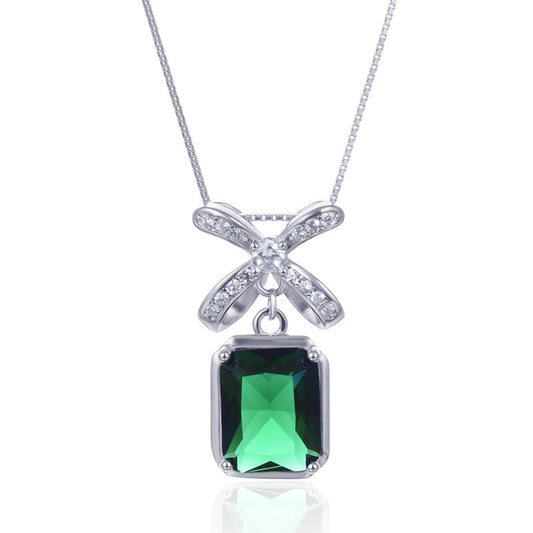Mastering the Classics: A Deep Dive into the JavaScript Snake Game
When it comes to classic games that have stood the test of time, the snake game undoubtedly holds a special place. This simple yet addictive game has captivated players for decades, evolving from its original arcade form to various digital incarnations.
Introduction to the Snake Game
The snake game, often known as "Snake" or "Nibbles," is a classic arcade game that dates back to the late 1970s. The objective is simple: guide the snake around the screen, eating apples or pellets to grow longer, while avoiding running into itself or the game boundaries. With each pellet consumed, the snake grows, making the game progressively more challenging.
In its digital form, the snake game has been adapted to various platforms, including mobile phones, web browsers, and even as a mini-game within larger video games. Its popularity stems from its straightforward gameplay and addictive nature.
Developing a JavaScript Snake Game
When developing a JavaScript snake game, there are several key components to consider: the game loop, snake movement, collision detection, and scoring. Let's break down each element.
1. Setting Up the Game Environment
Before diving into the code, it's essential to set up the game environment. This involves creating an HTML canvas element to display the game and initializing some basic variables.
| <canvas id="gameCanvas" width="400" height="400"></canvas> | |
| <script> | |
| const canvas = document.getElementById('gameCanvas'); | |
| const ctx = canvas.getContext('2d'); | |
| let snake = [{x: 200, y: 200}]; // Initial snake position | |
| let dx = 10; // Horizontal movement speed | |
| let dy = 0; // Vertical movement speed | |
| let food = {x: 300, y: 300}; // Initial food position | |
| let points = 0; // Player score | |
| // ... | |
| </script> |
2. The Game Loop
The game loop is responsible for updating the game state and redrawing the canvas at regular intervals. In JavaScript, this can be achieved using requestAnimationFrame or setInterval.
| function gameLoop() { | |
| // Clear the canvas | |
| ctx.clearRect(0, 0, canvas.width, canvas.height); | |
| // Update snake position | |
| const head = {x: snake[0].x + dx, y: snake[0].y + dy}; | |
| snake.unshift(head); // Add new head to the snake | |
| if (head.x === food.x && head.y === food.y) { | |
| // Increase score and generate new food if snake eats the current food | |
| points += 10; | |
| generateFood(); // Function to generate new food position | |
| } else { | |
| snake.pop(); // Remove tail if snake didn't eat food | |
| } | |
| // Draw snake and food on the canvas | |
| ctx.fillStyle = 'green'; | |
| for (let cell of snake) { | |
| ctx.fillRect(cell.x, cell.y, 10, 10); // Draw each snake segment | |
| } | |
| ctx.fillStyle = 'red'; | |
| ctx.fillRect(food.x, food.y, 10, 10); // Draw food | |
| // Check for collisions and game over conditions | |
| if (checkCollision()) { | |
| // Display game over message and reset game state or reload page | |
| } else { | |
| requestAnimationFrame(gameLoop); // Continue the game loop | |
| } | |
| } | |
| gameLoop(); // Start the game loop |
3. Snake Movement
Snake movement is controlled by changing the dx (horizontal movement) and dy (vertical movement) variables based on user input. Typically, arrow keys are used to control the snake's direction.
| document.addEventListener('keydown', function(event) { | |
| switch (event.keyCode) { | |
| case 37: // Left arrow key | |
| if (dx === 0) { dx = -10; dy = 0; } | |
| break; | |
| case 38: // Up arrow key | |
| if (dy === 0) { dx = 0; dy = -10; } | |
| break; | |
| case 39: // Right arrow key | |
| if (dx === 0) { dx = 10; dy = 0; } | |
| break; | |
| case 40: // Down arrow key | |
| if (dy === 0) { dx = 0; dy = 10; } | |
| break; | |
| } | |
| }); |
4. Collision Detection
Collision detection is crucial in determining when the game is over. This typically happens when the snake collides with itself or the game boundaries.
| function checkCollision() { | |
| for (let i = 4; i < snake.length; i++) { // Start from the fourth segment to allow for turns | |
| if (snake[i].x === snake[0].x && snake[i].y === snake[0].y) { | |
| // Snake has collided with itself | |
| return true; | |
| } | |
| } | |
| if (snake[0].x < 0 || snake[0].x >= canvas.width || snake[0].y < 0 || snake[0].y >= canvas.height) { | |
| // Snake has collided with the boundaries | |
| return true; | |
| } | |
| return false; // No collision detected | |
| } |
5. Scoring and Game Over Conditions
Scoring is typically based on the length of the snake or the number of apples eaten. The game ends when the snake collides with itself or the boundaries.
In our example, the score is incremented by 10 points for each apple eaten, and the game loop checks for collisions after each update. If a collision is detected, the game loop is stopped, and a game over message can be displayed.
Enhancements and Variations
Once you have the basic snake game up and running, there are numerous ways to enhance and customize it:
- Graphics and Animations: Use images or sprites instead of simple rectangles to represent the snake and apples. Add animations for smoother movement.
- Levels and Difficulty: Implement multiple levels with increasing difficulty, such as faster movement speed, narrower passageways, or more obstacles.
- Power-ups and Bonuses: Introduce power-ups that give the snake special abilities (e.g., speed boost, invincibility) or bonuses that award extra points.
- Multiplayer: Create a multiplayer version where players can compete against each other in the same game space.
- Sound Effects and Music: Add sound effects for snake movements, collisions, and power-ups, as well as background music to enhance the gaming experience.
- High Scores and Achievements: Implement a high score system to track players' best performances and unlockable achievements for completing specific challenges.
- Mobile Optimization: Optimize the game for mobile devices by adding touch controls and ensuring responsive layout and performance.
Conclusion
The snake game is a classic that has captivated players for decades. By following the steps outlined in this guide, you can create your own version of the snake game using JavaScript. With a bit of creativity and experimentation, you can enhance the game with various features and customizations, making it even more engaging and enjoyable for players. So, why wait? Grab your coding tools and start developing your own JavaScript snake game today!
Remember to share your creations with the community and showcase your unique take on this timeless classic. Happy coding!








